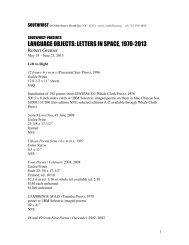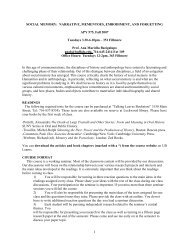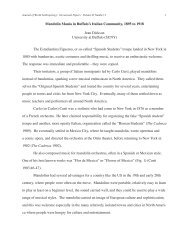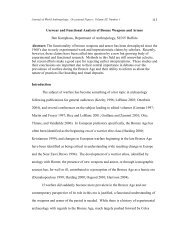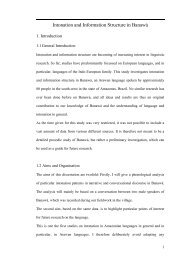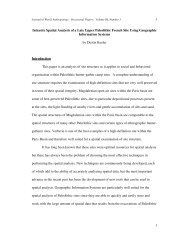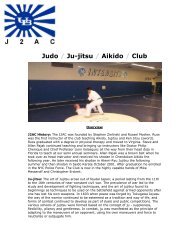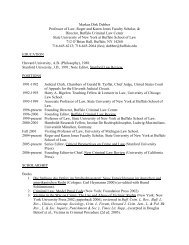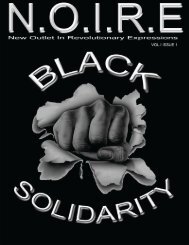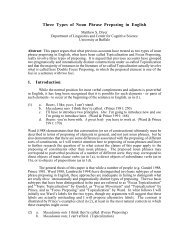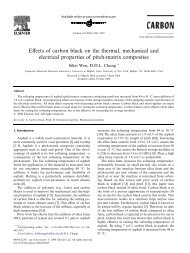Electrophysiological Evidence for Sentence Comprehension - Wings
Electrophysiological Evidence for Sentence Comprehension - Wings
Electrophysiological Evidence for Sentence Comprehension - Wings
Create successful ePaper yourself
Turn your PDF publications into a flip-book with our unique Google optimized e-Paper software.
word order strongly affects sentence comprehension in SLI children (Babić, 1995);<br />
there<strong>for</strong>e, child’s failure to comprehend the stimulus sentence and a very probable<br />
problem of keeping the child’s attention would definitely affect the measurements. Since<br />
the experiment is designed primarily <strong>for</strong> children, it will be referred to as the ‘tense-chi’<br />
experiment.<br />
The experiment consists of 200 stimulus sentences. One hundred sentences have a<br />
violation in tense, i.e. a mismatch between the auxiliary and main verb, as in the ‘tense’<br />
experiment. The main verb follows the auxiliary verb, which is a clitic after the first word<br />
in the sentence (as described and prescribed in Croatian grammars, e.g. Katičić, 1986).<br />
The direct object follows the main verb. There<strong>for</strong>e, each stimulus sentence consists of<br />
three (phonological) words: the subject and its clitic (auxiliary verb), the main verb and<br />
the object. The stimuli were presented visually in a word-by-word manner. Each word<br />
was presented <strong>for</strong> 600 ms with ISI of 1100 ms. The interval between the sentences was<br />
1700 ms. The sequence file was designed to allow slowing down the sequence if the<br />
stimuli were too fast <strong>for</strong> SLI children. As in all other experiments, after each 35-40<br />
sentences a pause was inserted to allow participants head movements and more intensive<br />
eye blinking. The participants were asked to make a grammaticality judgment after each<br />
sentence by pressing the button on the response pad.<br />
4.2.4. Behavioral tests<br />
Reaction time. Two kinds of behavioral tests were employed: reaction time was measured<br />
in all ERP experiments in order to keep the participants alert. However, in ‘case’ and<br />
77




